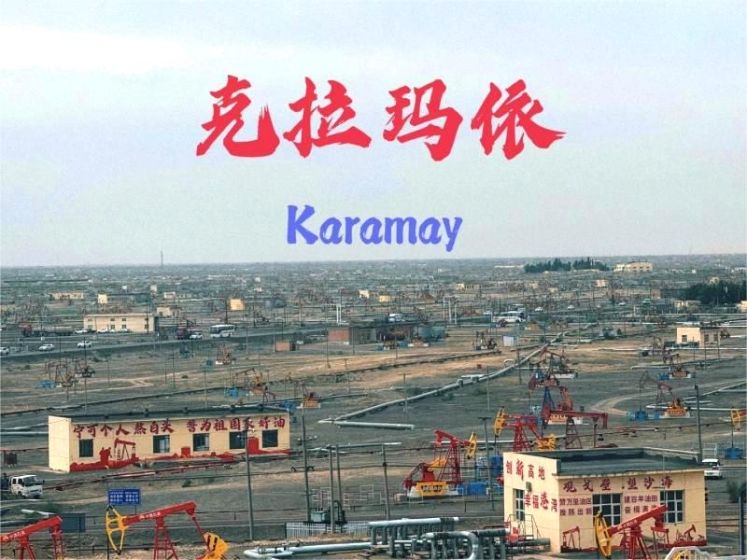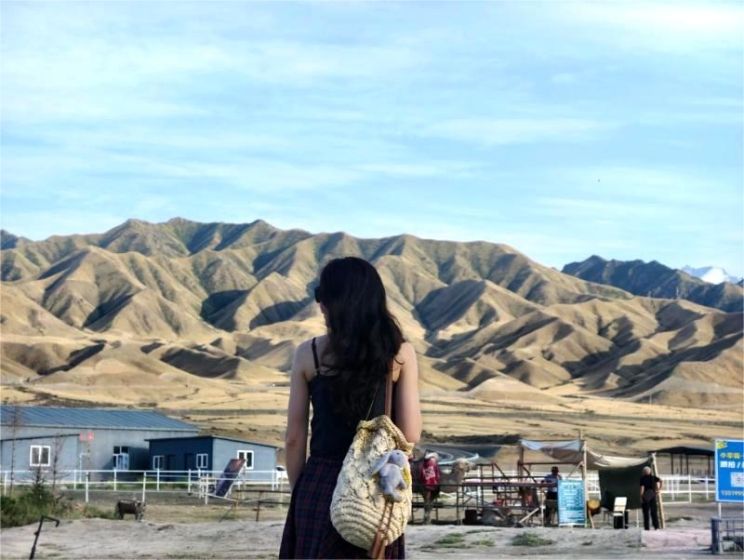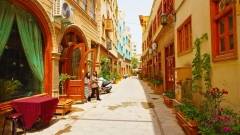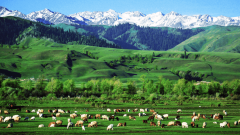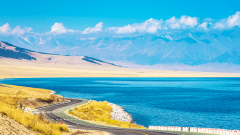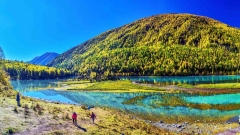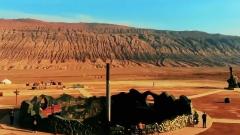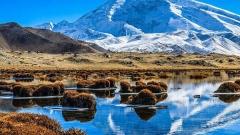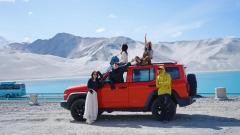Located in northwest Xinjiang, Karamay is a city that rose to prominence thanks to its oil industry. Here, you’ll find vast gobi deserts and lush green oases, along with many breathtaking natural wonders and modern urban landscapes waiting to be explored and experienced.
Karamay, meaning “black oil,” is one of China’s earliest large-scale petroleum industrial bases and one of the few modern cities in Xinjiang. Beyond its industrial fame, the city also boasts stunning natural scenery and rich cultural charm, making it well worth a special visit.
1. Xinjiang Ghost City: The Mysterious Marvel of Wind-Eroded Landforms
A must-visit first stop in Karamay is the Xinjiang Ghost City (Urho Wind City). The yardang landforms here, sculpted by wind erosion over millions of years, create strange, layered shapes resembling an otherworldly landscape. At sunset, the rocks glow golden-red, creating a vast and desolate spectacle that is truly awe-inspiring.
Named for the eerie howling wind sounds echoing through the canyons—like ghosts and wolves wailing—this site served as a filming location for movies like Crouching Tiger, Hidden Dragon and Hero. It’s a paradise for photographers and adventure seekers.
Travel tips:
- Best shooting times are at sunrise and sunset
- Summer daytime temperatures can be high, so bring sun protection
- Sightseeing buses are available within the park for easier touring
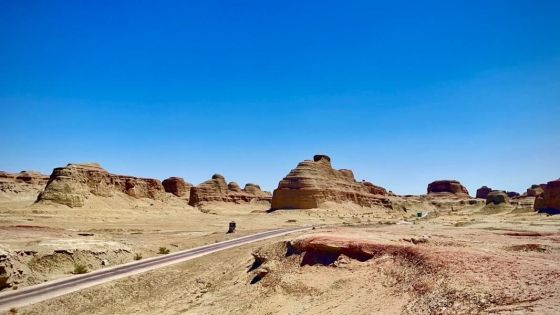
Wuerhe Ghost City
2. Black Oil Mountain: The Geological Birthplace of the Oil City
Black Oil Mountain is where the Karamay oil field was first discovered and is the origin of the city’s name. Standing atop the mountain, you can see natural crude oil seeping to the surface, shining with a distinctive black luster—one of the few visible oil fields worldwide.
Besides its geological significance, Black Oil Mountain offers insight into the history of China’s petroleum industry. A viewing platform at the summit provides panoramic views of Karamay city and the oil fields.
Why visit:
- Rare natural oil seepage geological wonder
- Learn about Xinjiang’s oil industry development
- Free admission and convenient access
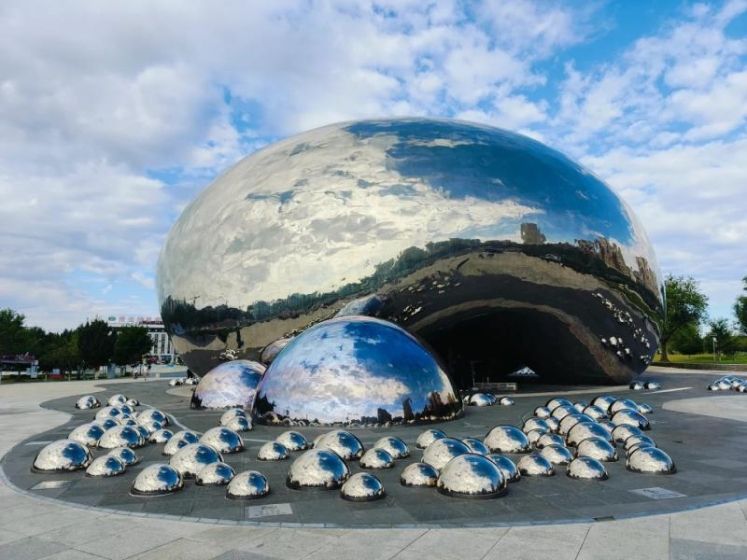
3. Dushanzi Grand Canyon: A Primitive and Stunning Natural Painting
Located south of Karamay, Dushanzi Grand Canyon was carved by Tianshan mountain snowmelt over tens of kilometers. The canyon features vertical cliffs and steep rock walls, with unique landforms often called the “Colorado of the Tianshan.”
The canyon is at its most beautiful during summer and autumn when the valley is lush and dotted with wildflowers—perfect for hiking and aerial photography.
Travel tips:
- Ideal for self-driving tours with spectacular scenery along the way
- Exercise caution when walking in the canyon
- Bring hiking boots, sun hats, and water
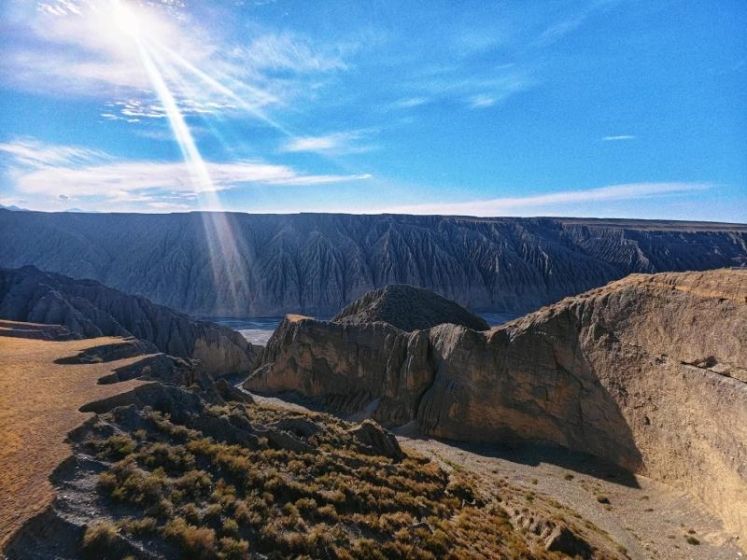
Dushanzi Grand Canyon 13-Day Northern Xinjiang Panorama Tour: Urumqi, Urho, Kanas, Tekes, Sailimu Lake & More
4. Karamay River Scenic Belt: A Green Corridor in the Desert City
Who says an oil city can’t be green? The Karamay River Scenic Belt in the city is a vibrant ecological green corridor. Walking paths, parks, and cultural spots line the riverbanks, making it a favorite place for residents to stroll and visitors to relax.
At night, the riverside lights and cool breezes create a peaceful atmosphere—perfect for slowing down and experiencing a tranquil side of Karamay.
5. Baikouquan Scenic Area: A Miracle of Life in the Gobi
Not far from downtown, Baikouquan is a wetland oasis formed by underground water springs. Its mirror-like waters and migratory bird habitats make it a prime spot for birdwatching and ecological photography.
In stark contrast to the dry, barren Gobi desert, Baikouquan showcases the resilience and beauty of life in extreme environments—a rare ecological tourism destination.
6. Food Recommendations: Taste the Flavors of the Oil City
Although Karamay is not as famous for traditional cuisine as Kashgar, this immigrant city brings together diverse Xinjiang flavors. In the city, you can enjoy authentic pilaf, grilled meat skewers, clay-pot chicken, yogurt, milk tea, as well as Mongolian and Kazakh hand-pulled meat dishes.
Recommended restaurants:
- Youcheng Laoweidao: Traditional Xinjiang restaurant
- Daxi Steakhouse: Popular local fusion of Western and Chinese cuisine
- Urho Specialty Restaurant: Near Devil City, known for lamb soup hotpot
7. Best Travel Time & Transportation
Best season: May to October annually. Summers are hot but sunny, ideal for sightseeing and photography; autumn offers pleasant weather and is the best time to capture the canyon and grasslands.
Getting there: Karamay has a civil airport accessible via connecting flights from Urumqi. You can also drive, take the high-speed train, or long-distance buses to the city. Local transport is well-developed, with convenient car rentals.
Karamay: A Low-Key but Stunning Corner of Xinjiang
Though Karamay may not enjoy the fame of more popular destinations nor appear frequently on travel hotlists, it preserves some of the purest natural landscapes and unique geological wonders.
It stands as a backbone of China’s oil industry and a vast land where you can quietly admire wind-shaped sculptures, watch clouds roll by, and capture dazzling starry skies.
If you visit Xinjiang, take a few days to explore Karamay—feel its unique charm and serenity, and discover the beautiful secrets carved by wind and time. Karamay is truly worth your heartfelt exploration.
